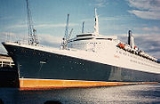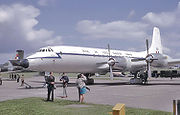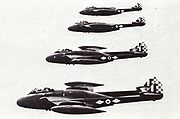
Parnall & Sons
Encyclopedia
Parnall & Sons Ltd was a shop and ship fitting and aircraft component manufacturer in Bristol
, England. The original company was set up in 1820 by William Parnall in Narrow Wine Street, initially making weights and measures, before expanding into shop keeping equipment and shop fittings.

 By the 1880s Parnall & Sons was the largest shop fitting company in England with showrooms in Narrow Wine Street and Fairfax Street, a scale works at Fishponds and branches in London and Swansea
By the 1880s Parnall & Sons was the largest shop fitting company in England with showrooms in Narrow Wine Street and Fairfax Street, a scale works at Fishponds and branches in London and Swansea
. The scales and weighing machines produced at the Fishponds foundry on Parnall Road included the hardy Patent Agate Hand Scales and the Patent National Balances invented by Mr Parnall, which sold 20,000 in 10 years. In 1889 the company expanded into shopfronts, including glasswork and iron architecture and had over 400 employees. By the 1890s "there is hardly a city or town in Great Britain where their productions are not known and appreciated". Weighing machine production was phased out after W & T Avery Ltd.
was associated and the company concentrated on its well known shop-front business. The foundry was later sold to George Adlam & Sons
the iron founders and brewers engineers.
During the First World War the company started manufacture of aeroplanes and seaplanes, producing over 600 by 1918. George Geach Parnall left the company soon afterwards, who eventually went on to form Parnall Aircraft Ltd
and successfully continued aircraft design and manufacture elsewhere in Bristol.
, Fishponds, in Bristol into a former factory of the Cosmos Engineering
aeroengines company. The company resumed manufacture of shopfronts, including the bronze shopfronts and display cases in Piccadilly Circus tube station
and steel canopies at the Savoy Hotel
and the Shakespeare Memorial Theatre in Stratford-on-Avon.
High profile work included the internal fittings for passenger liners, including the outfit of the Tourist class dining room on the RMS Britannic
built at Harland & Wolff for the White Star Line
in the late 1920s. In addition they also branched out into refrigerated and cold storage units, executive office furniture, and gained expertise in the fabrication of plastics leading to the formation of a plastics division.
 Once again the Air Ministry
Once again the Air Ministry
turned to the company for aircraft manufacturing, and the factory in Fishponds produced airframe components and fuselage sections in metal and wood for a range of RAF and FAA aircraft.
Manufacture throughout the war years included wings for De Havilland Tiger Moth
and Airspeed Oxford
trainers, wing flaps for Fairey Barracuda
torpedo-bombers and Handley Page Halifax
heavy bombers, fuselages for Shorts Stirling heavy bombers and Airspeed Horsa
gliders, and tail planes for Bristol Beaufighter
heavy fighter.
 Similar aircraft component work also continued after the war with contracts for the manufacture of fuselages in the late 1940s and 50s for the de Havilland Venom
Similar aircraft component work also continued after the war with contracts for the manufacture of fuselages in the late 1940s and 50s for the de Havilland Venom
, a jet single-seat fighter-bomber. Work continued with interior finishings for Bristol Britannia
airliners up until 1960, which then exploited the new materials available, such as plastic. In the late 1940s, the company turned its hand to supplying the new supermarket industry, producing metal shelving and display units.
Fittings contracts continued in the luxury market including contracts for 10 Downing Street
, Buckingham Palace
, the Houses of Parliament. Most famous of all was the production and installation of the internal fittings for public rooms onboard the Cunard
Ocean Liner QE 2 in 1960s.
In 1979, Parnall & Sons was bought by GEC, who subsequently sold the company to CH Holdings. The factory suffered a couple of unfortunate fires and went into receivership in May 1991 after over 170 years of trading in Bristol.
The factory was demolished in 1992 and the site is now occupied by ALD Automotive car retailers.
Bristol
Bristol is a city, unitary authority area and ceremonial county in South West England, with an estimated population of 433,100 for the unitary authority in 2009, and a surrounding Larger Urban Zone with an estimated 1,070,000 residents in 2007...
, England. The original company was set up in 1820 by William Parnall in Narrow Wine Street, initially making weights and measures, before expanding into shop keeping equipment and shop fittings.


Swansea
Swansea is a coastal city and county in Wales. Swansea is in the historic county boundaries of Glamorgan. Situated on the sandy South West Wales coast, the county area includes the Gower Peninsula and the Lliw uplands...
. The scales and weighing machines produced at the Fishponds foundry on Parnall Road included the hardy Patent Agate Hand Scales and the Patent National Balances invented by Mr Parnall, which sold 20,000 in 10 years. In 1889 the company expanded into shopfronts, including glasswork and iron architecture and had over 400 employees. By the 1890s "there is hardly a city or town in Great Britain where their productions are not known and appreciated". Weighing machine production was phased out after W & T Avery Ltd.
W & T Avery Ltd.
W & T Avery Ltd. is a British manufacturer of weighing machines. The company was founded in the early 18th century and took the name W & T Avery in 1818. Having been taken over by GEC in 1979 the company was later renamed into GEC-Avery. The company became Avery Berkel in 1993 when GEC acquired the...
was associated and the company concentrated on its well known shop-front business. The foundry was later sold to George Adlam & Sons
George Adlam & Sons
George Adlam & Sons Ltd was an iron and brass foundry and engineering company in Fishponds, Bristol, England.The company was founded on Parnall Road in the 1830s and soon expanded into a worldwide business building machinery for the chocolate and brewing industries, taking over the former foundry...
the iron founders and brewers engineers.
During the First World War the company started manufacture of aeroplanes and seaplanes, producing over 600 by 1918. George Geach Parnall left the company soon afterwards, who eventually went on to form Parnall Aircraft Ltd
Parnall
Parnall was a British aircraft manufacturer, that evolved from a wood-working company before the First World War to a significant designer of military and civil aircraft into the 1940s. It was based in the west of England.-History:...
and successfully continued aircraft design and manufacture elsewhere in Bristol.
Between the wars
In 1923, Parnall & Sons Ltd moved to Lodge CausewayLodge Causeway
Lodge Causeway is an ancient passage through the former Royal Forest of Kingswood and now the main road between Fishponds and Kingswood in Bristol, England...
, Fishponds, in Bristol into a former factory of the Cosmos Engineering
Cosmos Engineering
Cosmos Engineering was a company that manufactured aero-engines in a factory in Fishponds, Bristol during World War I. Sir Roy Fedden, the company's principal designer, developed the 14-cylinder radial Mercury engine during this period...
aeroengines company. The company resumed manufacture of shopfronts, including the bronze shopfronts and display cases in Piccadilly Circus tube station
Piccadilly Circus tube station
Piccadilly Circus tube station is the London Underground station located directly beneath Piccadilly Circus itself, with entrances at every corner...
and steel canopies at the Savoy Hotel
Savoy Hotel
The Savoy Hotel is a hotel located on the Strand, in the City of Westminster in central London. Built by impresario Richard D'Oyly Carte with profits from his Gilbert and Sullivan operas, the hotel opened on 6 August 1889. It was the first in the Savoy group of hotels and restaurants owned by...
and the Shakespeare Memorial Theatre in Stratford-on-Avon.
High profile work included the internal fittings for passenger liners, including the outfit of the Tourist class dining room on the RMS Britannic
RMS Britannic (1929)
RMS Britannic was an ocean liner of the White Star Line, the company's third ship to bear the name. She was built by Harland & Wolff in Belfast. She was launched on 6 August 1929. Like her running mate , Britannic was a motorship powered by diesel engines. She measured 26,943 gross tons and was ...
built at Harland & Wolff for the White Star Line
White Star Line
The Oceanic Steam Navigation Company or White Star Line of Boston Packets, more commonly known as the White Star Line, was a prominent British shipping company, today most famous for its ill-fated vessel, the RMS Titanic, and the World War I loss of Titanics sister ship Britannic...
in the late 1920s. In addition they also branched out into refrigerated and cold storage units, executive office furniture, and gained expertise in the fabrication of plastics leading to the formation of a plastics division.
The Second World War

Air Ministry
The Air Ministry was a department of the British Government with the responsibility of managing the affairs of the Royal Air Force, that existed from 1918 to 1964...
turned to the company for aircraft manufacturing, and the factory in Fishponds produced airframe components and fuselage sections in metal and wood for a range of RAF and FAA aircraft.
Manufacture throughout the war years included wings for De Havilland Tiger Moth
De Havilland Tiger Moth
The de Havilland DH 82 Tiger Moth is a 1930s biplane designed by Geoffrey de Havilland and was operated by the Royal Air Force and others as a primary trainer. The Tiger Moth remained in service with the RAF until replaced by the de Havilland Chipmunk in 1952, when many of the surplus aircraft...
and Airspeed Oxford
Airspeed Oxford
The Airspeed AS.10 Oxford was a twin-engine aircraft used for training British Commonwealth aircrews in navigation, radio-operating, bombing and gunnery during the Second World War.-Design and development:...
trainers, wing flaps for Fairey Barracuda
Fairey Barracuda
The Fairey Barracuda was a British carrier-borne torpedo- and dive bomber used during the Second World War, the first of its type used by the Royal Navy's Fleet Air Arm to be fabricated entirely from metal. It was introduced as a replacement for the Fairey Swordfish and Fairey Albacore biplanes...
torpedo-bombers and Handley Page Halifax
Handley Page Halifax
The Handley Page Halifax was one of the British front-line, four-engined heavy bombers of the Royal Air Force during the Second World War. A contemporary of the famous Avro Lancaster, the Halifax remained in service until the end of the war, performing a variety of duties in addition to bombing...
heavy bombers, fuselages for Shorts Stirling heavy bombers and Airspeed Horsa
Airspeed Horsa
The Airspeed AS.51 Horsa was a British World War II troop-carrying glider built by Airspeed Limited and subcontractors and used for air assault by British and Allied armed forces...
gliders, and tail planes for Bristol Beaufighter
Bristol Beaufighter
The Bristol Type 156 Beaufighter, often referred to as simply the Beau, was a British long-range heavy fighter modification of the Bristol Aeroplane Company's earlier Beaufort torpedo bomber design...
heavy fighter.
Post war

De Havilland Venom
The de Havilland DH 112 Venom was a British postwar single-engined jet aircraft developed from the de Havilland Vampire. It served with the Royal Air Force as a single-seat fighter-bomber and two-seat night fighter....
, a jet single-seat fighter-bomber. Work continued with interior finishings for Bristol Britannia
Bristol Britannia
The Bristol Type 175 Britannia was a British medium-to-long-range airliner built by the Bristol Aeroplane Company in 1952 to fly across the British Empire...
airliners up until 1960, which then exploited the new materials available, such as plastic. In the late 1940s, the company turned its hand to supplying the new supermarket industry, producing metal shelving and display units.
Fittings contracts continued in the luxury market including contracts for 10 Downing Street
10 Downing Street
10 Downing Street, colloquially known in the United Kingdom as "Number 10", is the headquarters of Her Majesty's Government and the official residence and office of the First Lord of the Treasury, who is now always the Prime Minister....
, Buckingham Palace
Buckingham Palace
Buckingham Palace, in London, is the principal residence and office of the British monarch. Located in the City of Westminster, the palace is a setting for state occasions and royal hospitality...
, the Houses of Parliament. Most famous of all was the production and installation of the internal fittings for public rooms onboard the Cunard
Cunard Line
Cunard Line is a British-American owned shipping company based at Carnival House in Southampton, England and operated by Carnival UK. It has been a leading operator of passenger ships on the North Atlantic for over a century...
Ocean Liner QE 2 in 1960s.
In 1979, Parnall & Sons was bought by GEC, who subsequently sold the company to CH Holdings. The factory suffered a couple of unfortunate fires and went into receivership in May 1991 after over 170 years of trading in Bristol.
The factory was demolished in 1992 and the site is now occupied by ALD Automotive car retailers.

